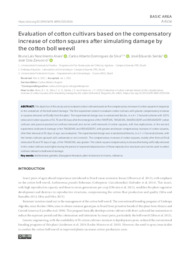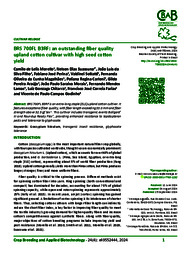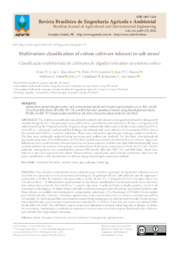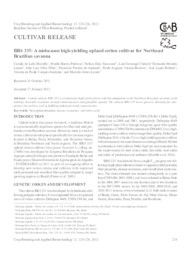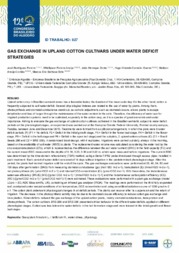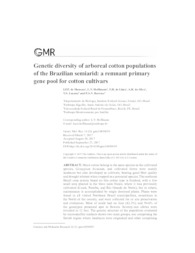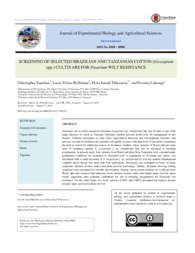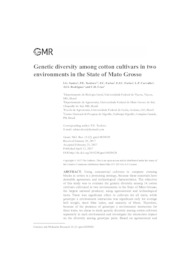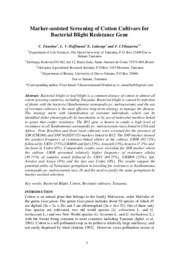Search Publications
Filter by:
| Author(s): ALVES, B. L. N.; SILVA, C. A. D. da; SERRÃO, J. E.; ZANUNCIO, J. C. The objective of this study was to evaluate cotton cultivars based on the compensatory increase of cotton squares in response to the simulation of the boll weevil damage. The first experiment aimed to... ... |
| Author(s): MORELLO, C. de L.; SUASSUNA, N. D.; SILVA FILHO, J. L. da; PERINA, F. J.; SOFIATTI, V.; MAGALHÃES, F. O. da C.; CARBONI, P. R.; ARAÚJO, G. P.; MORAIS, J. P. S.; LAMAS, F. M.; CHITARRA, L. G.; FARIAS, F. J. C.; GODINHO, V. de P. C. BRS 700FL B3RF is an extra-long staple (ELS) upland cotton cultivar. It features exceptional fiber quality, with fiber length exceeding 33.0 mm and fiber strength above 32.5 gf tex-1. This cultivar in... ... |
| |
| Author(s): MORELLO, C. de L.; SUASSUNA, N. D.; CHITARRA, L. G.; LAMAS, F. M.; SILVA FILHO, J. L. da; ANDRADE, F. P. de; RIBEIRO, J. L.; GODINHO, V. de P. C. Cotton cultivar BRS 335 is a midseason high-yield cultivar and has adaptation to the Northeast Brazilian savanna, yield stability, desirable resistance to main cotton diseases and good fiber quality.... ... |
| |
| Author(s): PEREIRA, J. R.; ARAÚJO, E. P.; ZONTA, J. H.; GUERRA, H. O. C.; CORDÃO, M. A.; BRITO, M. E. B. Upland cotton crop in Brazilian semiarid zones has a favorable factor, the duration of the mean solar day. On the other hand, cotton is frequently subjected to soil water deficit. Several physiologica... ... |
| Author(s): MENEZES, I. P. P. de; HOFFMANN, L. V.; LIMA, T. H. de; SILVA, A. R. da; LUCENA, V. S.; BARROSO, P. A. V. Mocó cotton belong to the same species as the cultivated species, Gossypium hirsutum, and cultivated forms were mainly landraces but also developed as cultivars, bearing good fiber quality and drought... ... |
| |
| Author(s): SANTOS, I. G.; TEODORO, P. E.; FARIAS, F. C.; FARIAS, F. J. C.; CARVALHO, L. P. de; RODRIGUES, J. I. S.; CRUZ, C. D. Using commercial cultivars to compose crossing blocks in cotton is a promising strategy, because these materials have desirable agronomic and technological characteristics. The objective of this study... ... |
| |
Observation
Some of Embrapa's publications are published as ePub files. To read them, use or download one of the following free software options to your computer or mobile device. Android: Google Play Books; IOS: iBooks; Windows and Linux: Calibre.
Access other publications
Access the Agricultural Research Database (BDPA) to consult Embrapa's full library collection and records.
Visit Embrapa Bookstore to purchase books and other publications sold by Embrapa.

